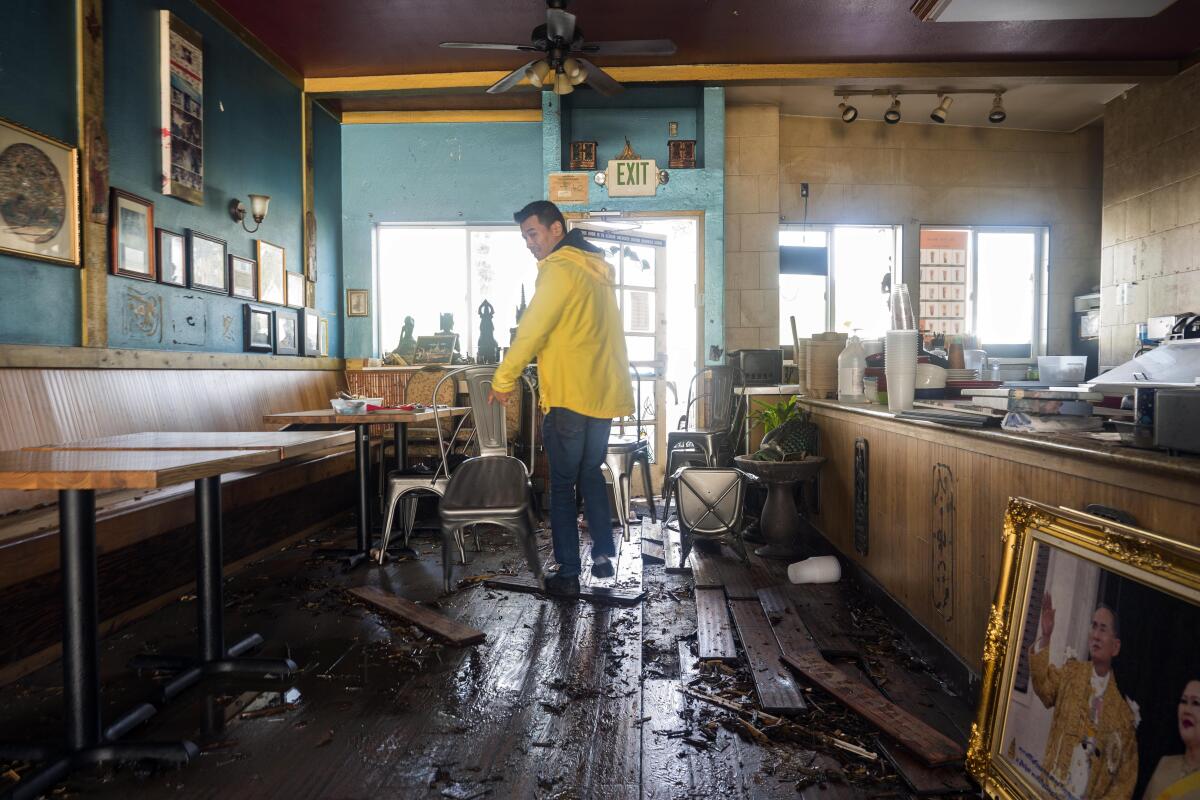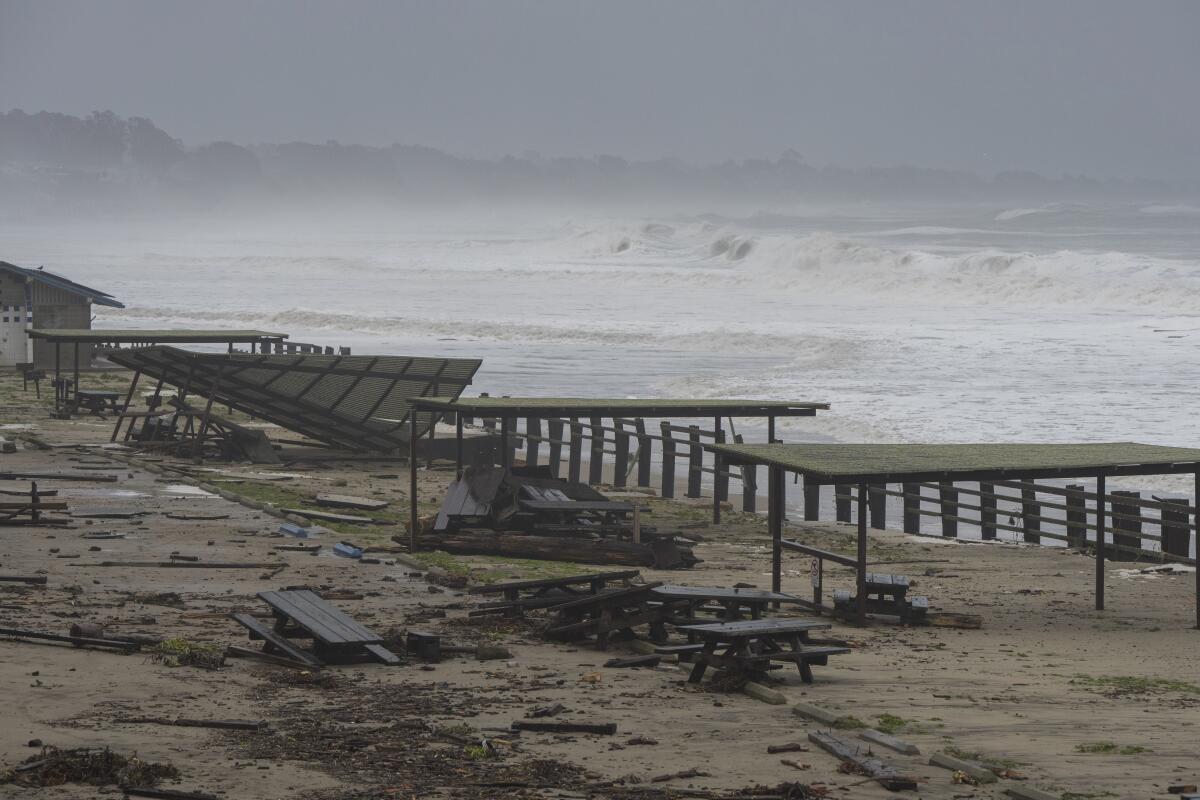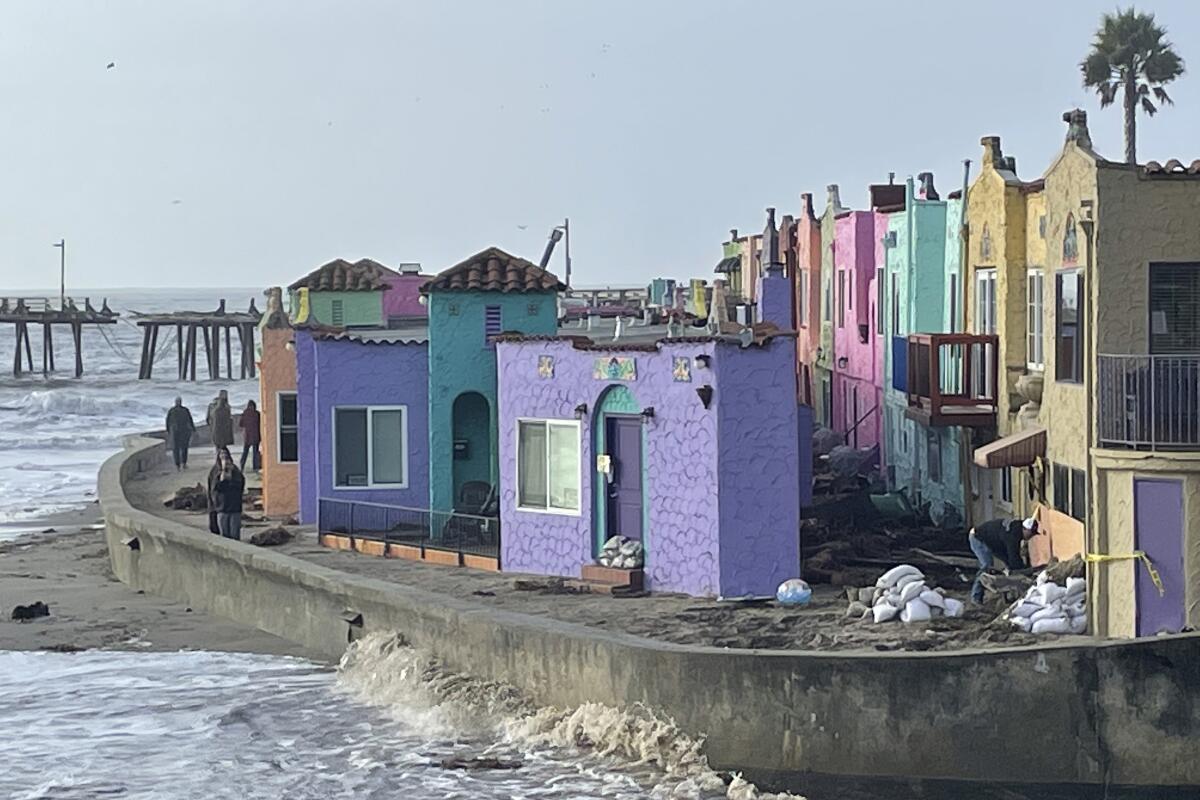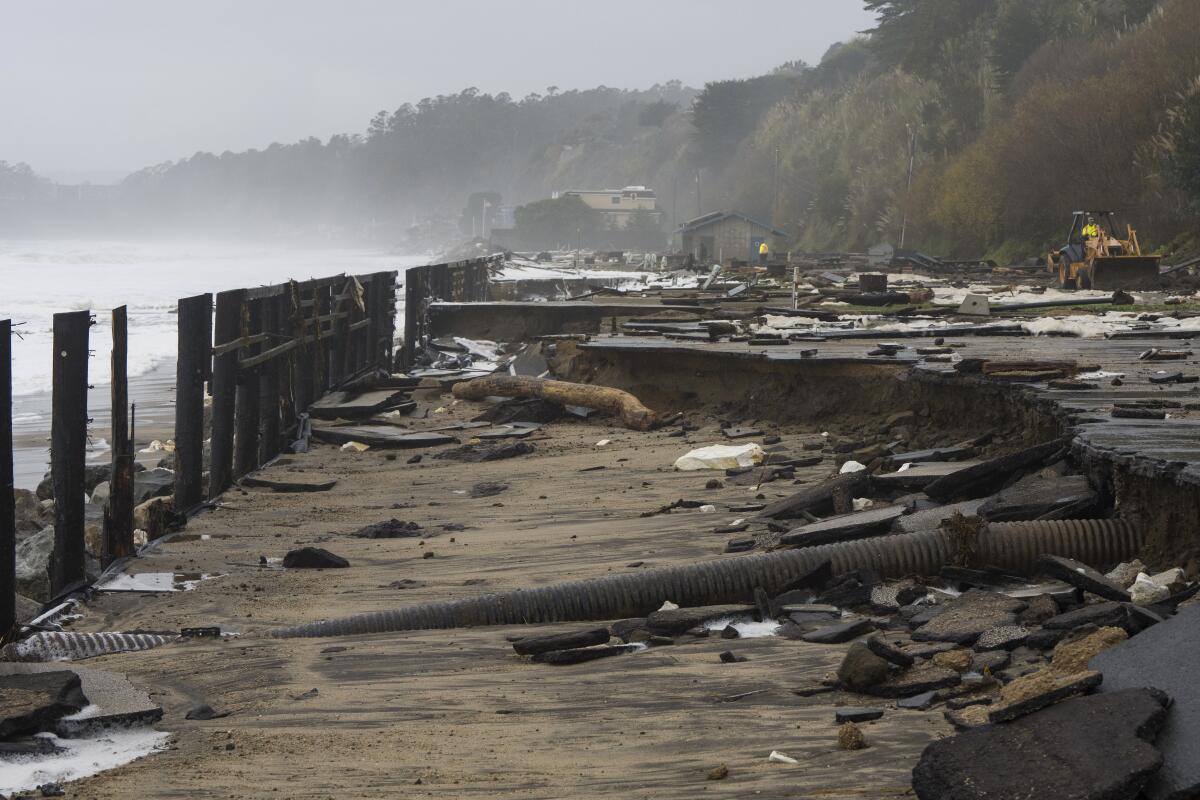‘So much to recover from’ after storm batters Santa Cruz County

- Share via
When Ed Hart was preparing to leave New York to visit family in Santa Cruz County, he expected a “cool, California stay,” with plenty of opportunities for photos.
“I didn’t check the forecast because I was sleepy and I always assume it’s sunny and sunny again,” said Hart, a grocery store employee.
But when he drove toward the Capitola pier earlier this week, he didn’t even get out of the car. Instead, he headed back to his hotel upon hearing warnings that strong waves would pummel the structure after a furious storm.
Whipped up by a large central Pacific system, giant, sustained swells lashed at the county coastline for hours Thursday, destroying sections of the pier — and ultimately splitting it in half — and leaving residents frantic and a community reeling.

“Sometimes you read that a big one is coming, but you don’t always believe it,” said Max Ryan, an artist and Hart’s cousin. “Today you look at our creeks, the ocean, the smashed buildings, the wreck — there’s so much to recover from. It’s a shock. We’ve been hit with lots of rain in the past, yet nothing like this.”
In Capitola, a small town gracing the northern shores of Monterey Bay with a population of about 10,000, cleanup efforts are continuing after this week’s massive flooding and erosion. The damage already totals in the millions — including $10 million to $15 million for the Capitola Wharf, according to early county estimates — and many locals fear the toll will worsen with more rain in the forecast.
Officials in Santa Cruz County not only are watching waves batter coastal communities, they are keeping an eye on saturated soil in the mountains — which is becoming increasingly vulnerable to slides as rains continue.
Then there are the rain-swollen rivers. Typically, those rivers would rush their contents downstream into the ocean. But given the size of the storm surge, water is getting pushed back as it tries to escape — flooding lowland areas along creeks and rivers, said Melodye Serino, a deputy county administrative officer.
She said residents are taking these lulls in the weather to assess and prepare. But that’s hard to do when it’s unclear where the threat is going to come from: rain, storm surge, flooding or all three.

Capitola authorities have been on round-the-clock alert, with officials and volunteers trying to help clear debris dotting the once postcard-worthy beaches and rocky coves. This weekend, dozens of businesses remain red-tagged and off-limits to their owners and tourists alike. Plenty of restaurants and mom-and-pop shops have yet to reopen.
The 45 to 48 feet of swell that took aim at the town Thursday was aided by sustained winds of about 70 mph, according to the National Weather Service.
An evacuation order imposed Thursday was lifted the following day, but not before disrupting post-holiday shopping for Chris Wong and her kids.
Wong wanted to take advantage of new 2023 sales around the region and stock up on groceries after a few hours of work at her computer.
“The children like to play in the water outside,” said the nonprofit consultant bunking in one of her Central California homes. “I told them, ‘No. We have to stay put. Just play with your Christmas toys while Mom figures out how to repair the roof leak.’ We’re lucky we don’t have complete destruction.”
Yet some of her friends had to flee elsewhere. Countywide, almost 200 residents have been displaced by the storm, a tally likely to increase as inspectors make the rounds, red-tagging homes they view as hazardous.
Nearly 10,000 people in Santa Cruz greeted Friday without electricity because of toppled power lines, according to Poweroutage.us.
The recent punishing storm carved a destructive path across California. Waves badly damaged the pier in Seacliff, and the Oakland Zoo is closed until at least Jan. 17 because of a major sinkhole caused by a collapsed culvert.

Wong says she is glued to her phone for all the latest deluge updates. For locals, this week marks 41 years since the Love Creek tragedy, when 10 people died in a mudslide during a three-day storm that started Jan. 3, 1982.
After turning back from the pier, Hart decided to make his way down to San Diego.
“Man, I just didn’t imagine this,” Hart said of the storm with its high tides, raging surf and catastrophic waves.
“This part of California is a different reality for me now.”
More to Read
Sign up for Essential California
The most important California stories and recommendations in your inbox every morning.
You may occasionally receive promotional content from the Los Angeles Times.










